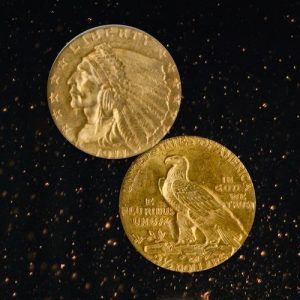The Blanchard “Test Your Coin IQ” Quiz
Posted onWelcome coin investors! The history of coins and money is fascinating. Test your coin IQ with the questions here. Let us know how you did in the comment section below!

- What is the first commemorative coin in U.S. history?
Answer: The 1892 Columbian Exposition half dollar was minted to commemorate the World’s Columbian Exposition, also known as Chicago’s World Fair. These half dollars with a face value of 50 cents were sold for $1 to help cover the spiraling costs of the World Fair. With a fairly high mintage, only a few coins of high grade quality show outsized value. The average auction price for all years of the coin is around $613, according to the NGC.
Coin details: The obverse design features Christopher Columbus in profile. The reverse features the Columbus flagship, the Santa Maria, and two globes. The Reverse Inscription includes: WORLD’S COLUMBIAN EXPOSITION, CHICAGO, 1492, 1892.
- What commemorative coin boasts the Italian phrase: “Fatti Maschii Parole Femine”?
Earn extra credit if you know the translation.
Answer: The Italian phrase translates to “Deeds are manly, words womanly” and is the Maryland state motto. That phrase appeared on the 1934 Maryland Silver Commemorative coin.
This coin is an example of a classic U.S. commemorative coin. The 1934 Maryland half dollar was issued to celebrate the 300th anniversary of English colonist’s arrival in the state Maryland. About 300 English colonists arrived aboard two ships (the Ark and Dove) in 1634 to settle in the area that is now Maryland. Lord Baltimore George Calvert held the Royal Charter for that land. Notably, this coin is one of the first commemoratives struck after the start of the Great Depression in 1929. Struck at the U.S. Mint in Philadelphia, the mintage totaled 25,000.
You can own this coin for as little as $231.00.
Coin details: The obverse of the coin features a portrait of Cecil Calvert, or Lord Baltimore, who sponsored the colonists. The reverse of the coin features the coat of arms of Maryland with the phrase: Fatti Maschii Parole Femine. Additional inscriptions include “Maryland Tercentenary” and the dates “1634-1934”.
- What gold coin series used an “incuse design” (not a raised design).
Hint: The obverse features a male Indian chief with a large ceremonial headdress.
Answer: The Indian Head Quarter Eagle with a face value of $2.50 was introduced in 1908 and minted through 1929. It is noteworthy for its incused design: the lettering is sunk into the flat plane of the coin. This revolutionary sunken design concept is credited to a Boston physician: William Sturgis Bigelow, a friend of President Teddy Roosevelt. Grading of these coins is considered difficult as the incused design does not show much wear.
The coins were popular Christmas gifts in the late 1920’s and remain extremely coveted by collectors today.
Take a look at a few examples here.
Coin details: Bella Lyon Pratt crated the design which features a Native American Indian Chief on the obverse and an eagle facing left on the reverse. The 1911–D mintage totaled 55,680 and is considered the “key date” of this series. The survival rates are low, which increased the rarity value of these stunning 1911 coins.
The last coin was struck in 1929 as the Great Depression hit. The 1929 mintage totaled 532,000. Most 1929 examples are nicely struck with great luster even today. However, this date is notable for more than average bag marks. Perhaps once the Great Depression hit, the movement of gold coins slowed significantly.
If you enjoyed this article, please let us know at 1-800-880-4653.
Read More:
Trivia Questions For Coin Collectors: Do You Know The Answer?
Beyond Bullion: The Beauty and Allure of Pre-1933 Gold Coins







